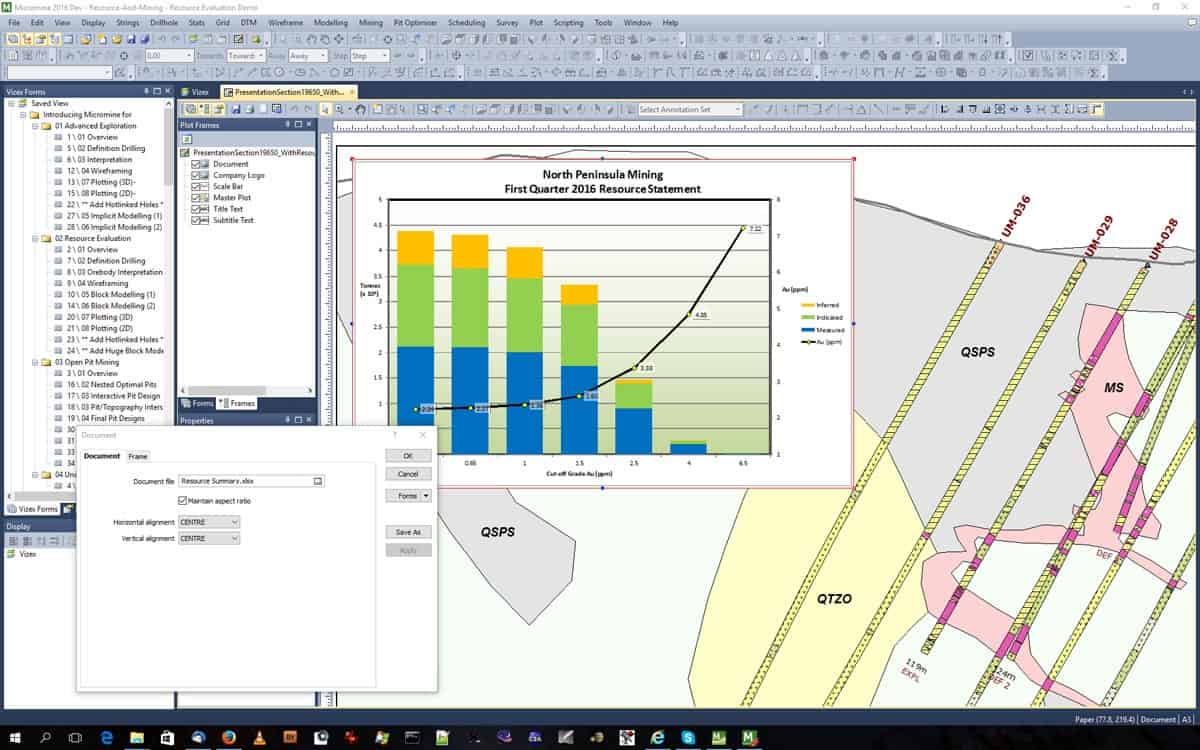Improved software design
With the release of Micromine 2016, the leading exploration and 3D mine design solution, MICROMINE delivered mining target software with improved flexibility, functionality and performance to users in both exploration and mining operations.
Micromine is mining target software that provides users with an in-depth understanding of their projects so prospective regions can be targeted more accurately, increasing the chance of the project’s success.
Micromine 2016 is comprised of ten modules with numerous new and enhanced features improving Micromine’s targeting software capability.

Developments in drillhole planning
Micromine’s exploration module saw its drillhole planning functionality enhanced through the inclusion of new tools. The module includes tools for various advanced exploration and resources estimation tasks such as visualisation, drillhole management and modelling. These tools provide geologists with a clearer interpretation of project data, allowing for the more efficient targeting of resources.
While drillhole planning in Micromine previously focused on generating a pattern of drillhole collars in plan view, the new tools in Micromine 2016 now allow for drillhole traces to be drawn as strings and then converted directly to collar and survey files. This allows geologists to quickly and accurately produce more intelligent holes exactly where they want them to, demonstrating Micromine’s mining target software capability.
Simple information transfer
Micromine’s resource estimation module is used for detailed analysis and reporting, and provides a comprehensive range of modelling functions for mine planning and reserve estimation. In previous versions of Micromine, block indices were the only way to transfer information from a block model to another Micromine file. With the introduction of the block model assign tool in Micromine 2016, block indices have been removed altogether to provide a much simpler and more streamlined way to pass block model information to another file. Now users can simply assign the relevant block model attributes directly into the target file. This makes it easier to combine different models for the same project, highlighting Micromine’s mining target software simplicity.
Enhanced modelling module
One of the feature highlights of Micromine 2016 was the overhaul of Micromine’s implicit modelling module. The module uses radial basis functions (RBFs) to model grade shells, lithology boundaries and surfaces. These are generated by using 3D points or polygons to create wireframe solids that represent features like zones of a specified grade range. These wireframes are readily displayed in Micromine’s Vizex visualisation environment and are a valuable tool for finalising geological or grade interpretations.

Innovations in efficiency: Structural trend tool
Micromine 2016 saw the inclusion of a new structural trend tool that incorporates a locally varying structural trend in the modelling process that extends Micromine’s mining target software capability. A structural trend is a generalisation of the global trend that provides geologists with a clearer interpretation of the material grade in a zone. As Micromine’s implicit modelling module uses RBF’s, the time that it takes to generate models over traditional wireframing workflows is significantly reduced by up to even days. This helps to increase the efficiency and reduce overall costs of the operation.
Making the right choice
When deciding what mining target software to use, it is important to select one that will provide the most accurate estimation of resources without taking too much time. The introduction of the new and enhanced features in Micromine 2016 provides users with a greater understanding of their projects, enabling prospective regions to be targeted with more accuracy and ultimately increasing the likelihood of the project’s success.
Further reading
>Learn more about Micromine 2016 capabilities.








